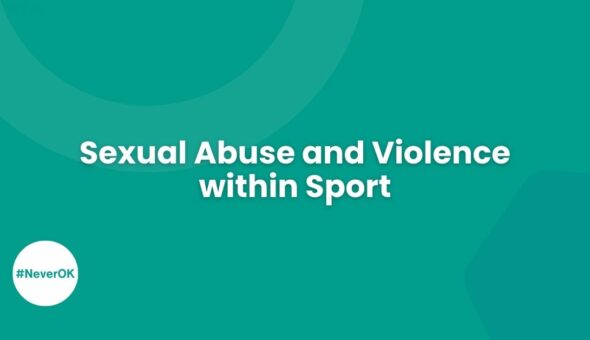As part of Sexual Abuse and Sexual Violence Awareness Week, Ela Yanik from The SU It Happens Here Society has written a blog dismantling some common myths around consent and rape.
*sensitive content regarding sexual violence and rape*
Consent is fundamental when engaging in any form of sexual activity – it ensures the safety of all individuals involved while also promoting comfortable and pleasurable experiences. Situations where consent is violated, however, are a serious criminal offence and may involve sexual assault, sexual abuse or even rape.
The many myths surrounding the concepts of consent and rape are extremely problematic in that they perpetuate false and harmful narratives which aim to excuse sexual violence, contribute to feelings of shame and guilt among victims and lead to underreporting. This is extremely dangerous – victims may fail to recognise their abuse and not receive the support and justice they deserve. There is a fundamental need to be open in engaging in these conversations, dismantling these myths and ensuring that we all recognise the true reality of what safe and consensual sex really looks like.
What is consent?
According to the Sexual Offence Act of 2003, ‘consent’ in regard to sexual activity is defined as an individual agreeing by choice, possessing the freedom, and having the capacity to make that choice. Yet what does this actually mean, and how does this apply to real-life scenarios. By recognising what consent does and does not look like, and challenging previous misconceptions, can ensure that we acknowledge its importance in our personal lives, encouraging safe sex, while also supporting those around us who may be unsure.
Things to know
- Consent is active, and can be withdrawn at any point during sexual activity
- Consent may only be given subject to specific conditions e.g. wearing a condom
- Consent can be established by communicating beforehand about what you are comfortable/uncomfortable with
- Consent needs to be given for each occasion – previously having sex with someone does mean consent is inevitable
- Orgasms or arousal are involuntary bodily responses and do not reflect that someone is consenting
- You should always respect someone’s decision
Consent
- If someone says ‘yes’ – (this does not include those in abusive relationships or in unequal power dynamics, where someone may feel forced to consent)
- Actively checking in with your partner if they’re comfortable, and receiving a positive response
- If someone’s body language is visibly engaged in the act, and are enthusiastically consenting
- Establishing what you want and do not want to do, and respecting each other’s boundaries
Not Consent
- If someone clearly says ‘no’
- If someone is quiet, unsure or moves away – non-verbal signs which show hesitation
- If someone consents to one form of sexual activity (e.g. vaginal) but not another (e.g. oral or anal)
- If someone is severely intoxicated or under the influence of drugs impacting their capacity to consent
- If someone is asleep or unconscious
- If someone is forced, coerced, intimidated or bullied into saying ‘yes’
- If someone has a mental health disorder or illness which impacts their capacity to consent
- If someone is using force or power, or in an abusive relationship
- If someone is taking advantage of unequal power dynamics which impacts freedom to consent – e.g. family member, teacher, employer, carer etc.
- Removing a condom when initially agreeing to wear one – known as ‘stealthing’
- If someone is dependent on the perpetrator for any reason (e.g. financial reasons), forcing someone to consent
If consent is not provided and boundaries are not respected, then it is a form of sexual violence.
What is rape?
Rape is an extremely serious criminal offence, and is an example where consent is not present, yet the myths that surround the issue are problematic in that they misconstrue its true nature, invalidating victims and their lived experiences.
The Sexual Offence Act of 2003 defines rape as:
- They intentionally penetrate the vagina, anus or mouth with their penis
- The other person does not consent to the penetration
- They do not reasonably believe that the other person consents
Before exploring the common myths that remain influential, it is important to reflect on the complex nature of rape in order to understand the troublesome aspects of these misconceptions:
- Rape occurs when there is a lack of consent from an individual
- Rape is a traumatic event that severely impacts the victim, but also friends and family
- Anyone can be a victim
- Anyone can be a perpetrator
- Responses to rape vary among victims
Common Myths Debunked
*It is important to note that these myths listed are not the only misconceptions that exist surrounding rape and consent*
Myth #1: ‘Rape is always a violent act’
A common misconception is that rape always entails an element of force and violence, which is false. Situations like this do occur, however rape can occur due to other reasons – the use of manipulative techniques, the victim engaging due to fear of being hurt and/or the victim unable to move out of shock.
Myth #2: ‘Consent is inevitable in a relationship’
Every occasion of sexual activity requires consent from all parties. Rape can occur within relationships, where there is an element of abuse and power. Recent statistics show that 44% of victims have been attacked by their partner or ex-partner.
Myth #3: ‘They were asking for it through the way they were dressed or their flirtatious behaviour’
A victim is never, ever to blame for what happened to them. What someone chooses to wear is not an explanation for the rape.
Myth #4: ‘The victim didn’t scream, fight back or show signs of injury’
The way a victim reacts to rape varies. Individuals may be paralysed from fear, unable to fight, speak or move. Context is important, and if consent was not provided before or during, then it is classed as rape.
Myth #5: ‘The victim didn’t explicitly say ‘no’
Individuals may express their objection to sexual activity through other means. Again, victims may be paralysed from fear, unable to shout and verbally express their disproval. Body language may also reflect resistance and reluctance.
Myth #6: ‘Men cannot control themselves when they get turned on’
There is no scientific evidence for this. Anyone has the capacity to withdraw at any time when a partner expresses that they do not want to continue with the activity. This is not an excuse or explanation for rape.
Myth #7: ‘The victim took too long to say anything for it to have been rape’
Rape is a difficult and traumatic experience, and each victim reacts and copes with it differently. Some may not want to discuss the event straight away, some may be initially hesitant to report it. A late allegation does not mean that it is false.
Myth #8: ‘Men don’t face sexual violence’
Anyone can be a victim of sexual violence. While the majority of victims are women, we must acknowledge that men are also victims of sexual abuse, sexual assault and rape. Reports show that 1 in 18 men have been sexually assaulted.
Myth #9: ‘Women don’t commit sexual offences’
Anyone can be a perpetrator of sexual violence, both men and women. While the majority of perpetrators of sexual violence are men, it is important to recognise that these individuals can be of any gender, age, ethnicity or sexuality.
Myth #10: ‘They have lots of sex already, and so they deserve it/want it’
This is no excuse. Every occasion requires the consent of an individual, regardless of their previous activities. The victim is never to blame.
Myth #11: ‘If you agree to go to someone’s house, sex is inevitable’
Going to someone’s house after a night out or date is not explicit consent. Victims need to verbally and explicitly express they want to engage in a sexual activity. Also if an individual changes their mind, this must be respected.
Underreporting is a serious barrier to achieving justice and support when it comes to sexual violence. 5 in 6 women and 4 in 5 men fail to report their experience of sexual abuse or rape. The prevalence of these myths exacerbate this reality. Acknowledging that these beliefs are false and problematic is important in promoting safe and consensual sex, while also recognising situations where this may not be the case. And so, we must all play a role in actively dismantling these common misconceptions in an effort to make a significant difference.
Where to Look for Support
If any of the themes or topics discussed in this blog resonate with you and you’d like to seek support, please see our sexual assault or harassment webpage.
Training opportunities:
The Student Policy and Safeguarding team will be holding the following training session.
Is This a Red Flag?
Wed 14 Feb 2024, 10:15 am - 11:45 am
This Valentine's Day make sure you're keeping yourself and others safe when being intimate, online or off. We're all "consenting adults", but what does that really mean?
Breakfast pastries and coffee will be provided as part of this event. Please let us know any dietary requirements in advance. As food is being ordered for this event it is important to check you can definitely attend before booking.
Please note this is an in-person workshop, but if you study away from campus please get in touch for a hybrid option. This event is for students only.
If you would like to book a place, please book via MySkills
References
Office for National Statistics. 2021. Nature of Sexual Assault by Rape or Penetration, England and Wales: Year Ending March 2020. UK. Available from: Nature of sexual assault by rape or penetration, England and Wales - Office for National Statistics (ons.gov.uk)
Rape Crisis: England and Wales. Myths vs Facts. UK. Available from: Myths vs facts | Rape Crisis England & Wales
Rape Crisis: England and Wales. What is Sexual Consent? UK. Available from: What is sexual consent? | Rape Crisis England & Wales
Sexual Offences Act 2003. UK: Government. Available from: Sexual Offences Act 2003 (legislation.gov.uk)
The Crown Prosecution Service. 2021. Rape and Sexual Offences – Annex A: Tackling Rape Myths and Stereotypes. UK. Available from: Rape and Sexual Offences - Annex A: Tackling Rape Myths and Stereotypes | The Crown Prosecution Service (cps.gov.uk)
Respond




